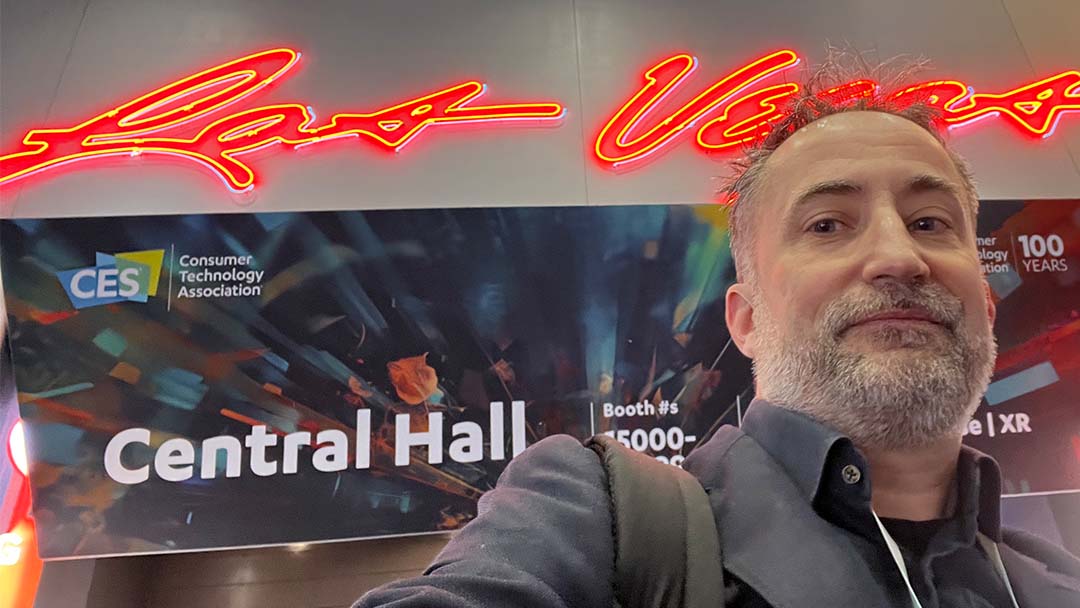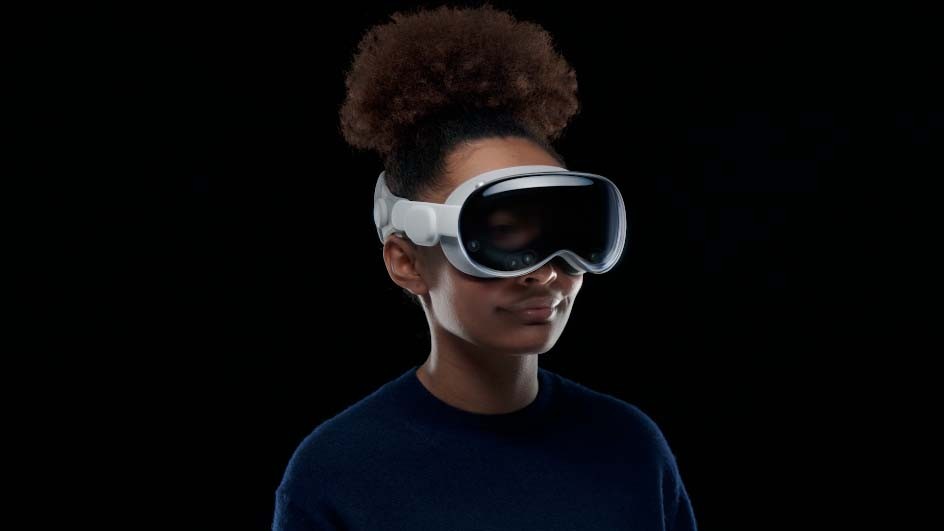XR Trends 2024: A Glimpse into the Virtual Crystal Ball I by Ulrich Buckenlei (MBA)
Introduction
When I visited CES in Las Vegas from January 9-12, 2024, I realized how much Extended Reality (XR) has reshaped our understanding of technology and interaction. For more about my visit to CES2024, find a detailed article here. This year showed that the boundaries between corporate solutions and consumer products in the field of XR are increasingly blurring. We witnessed groundbreaking innovations in audio, video, XR, AI, and the Metaverse and their conceptual and applied synergies across various technology fields. At the beginning of the year, CES already displayed a fascinating mix of new digital solutions that could change the future of work and life. So, what can we expect in the coming months?
Siemens, Sony, NVIDIA, XREAL, Qualcomm, PIXO VR, and Dimension X took the stage in Las Vegas to present their latest innovations and concepts in the Industrial Metaverse and Spatial Computing.
Beyond the XR area, the event highlighted numerous upcoming products, but the highlights in the XR area were particularly striking. From award-winning haptic glove solutions to innovative VR headsets like the Crystal VR from Primax, equipped with a 60G AirLink wireless module for fast data transfer and low-latency streaming, CES 2024 was a showcase for the future of immersive technologies.
As I visited the various stands and demos, I realized that we are on the threshold of a new era. Developments in XR, especially in AR and VR, promise an exciting future. Here are some of my observations and predictions for 2024.

Impressions from CES 2024 in Las Vegas (USA).
Photo: © Ulrich Buckenlei, CES 2024, Las Vegas
Apple Vision Pro: A New Chapter in the XR World
The planned introduction of Apple’s first mixed reality headset, the Vision Pro, in early February on the US market is predicted by many experts as a significant milestone in the world of Extended Reality. The Vision Pro is positioned as a mixed reality headset offering a new user interface with gesture-based interaction, voice input, and eye-tracking.
User Interface and Ergonomics: Apple’s Vision Pro relies on a gesture-based user interface, supplemented with voice input and eye-tracking. This approach differs from traditional headsets that mostly use controllers. The Vision Pro aims to redefine user experience in mixed reality and could be particularly useful in educational settings.
Integration and Ecosystem: The Vision Pro requires integration with other Apple devices, which could be advantageous for companies already invested in the Apple ecosystem. Seamless integration into existing systems and Apple’s strong developer community could prove to be a decisive factor for the device’s success.
Battery Life: A critical feature of the Vision Pro is its two-hour battery life. This could pose an obstacle for longer interactions or presentations, especially compared to competing products like the Vive Focus 3, which offers interchangeable batteries.
Price and Accessibility: With a starting price of $3,499, the Vision Pro is significantly more expensive than many competitors. This could be a challenge for educational institutions, smaller retailers, and startups with tight budgets. The high costs could also lead to a digital divide by making the technology more of a luxury item than a standard tool.
Handling and Portability: The Vision Pro comes with a wired external battery case, which could pose logistical issues for certain industries like manufacturing. The cabling could lead to safety considerations in scenarios requiring frequent movements.
Apple’s Vision Pro has the potential to significantly impact the XR industry, yet its widespread use in corporate environments might be more a vision for the future than the present (Sources: XR Today, ArborXR).

Apple Vision Pro – Apple’s First Mixed Reality Headset.
Photo: © Apple
XR in the Industrial Sector: From Experimentation to Standard
CES 2024 confirmed that Extended Reality (XR) is no longer just a technology for enthusiasts but has firmly established itself in the industrial sector. This development is characterized by:
Cross-Industry Application: While XR was initially popular mainly in gaming, this has significantly changed. Educational institutions use immersive learning, the healthcare sector uses XR for realistic medical training, and companies implement XR in innovative training programs. This versatility highlights XR as a transformative technology that goes beyond entertainment and opens up new possibilities for education, training, and professional development.
Generative AI and XR: The Vision Pro requires integration with other Apple devices, which could be advantageous for companies already invested in the Apple ecosystem. The seamless integration into existing systems and Apple’s strong developer community could prove to be a decisive factor for the device’s success.
Market Growth and Investments: The XR industry in North America is experiencing significant growth thanks to substantial investments in brand innovations. The USA, as the home of many XR technology firms, plays a leading role. This market is further driven by high technological affinity and the easy availability of connected devices. In addition, U.S. government institutions use XR as an educational tool and develop programs for local workforce development.
Growth of the XR Industry: The projected size of the global market for Extended Reality (XR) is expected to rise from $105.58 billion this year to $472.39 billion over the next five years, an annual growth rate (CAGR) of 34.94%. This growth is driven by increasing demand and the use of XR technologies in various sectors such as education, industry, healthcare, as well as media and entertainment. (Sources: Mordor Intelligence)
These developments show that XR is more than just a niche and is becoming an integral part of various industries. The industry is on the threshold of a new era in which XR technologies will fundamentally change the way we work and learn, as well as how we interact and communicate.

Extended Reality Market Size & Share Analysis – Growth Trends & Forecasts (2024 – 2029).
Source: © Mordor Intelligence
Siemens’ Pioneering Work in the Industrial Metaverse
Siemens impressively demonstrated at CES 2024 how the company is enriching the industrial Metaverse with groundbreaking developments. One of the highlights was the introduction of the NX Immersive Designer, an innovative platform that revolutionizes engineering.
Innovative Technology in Detail: Siemens’ NX Immersive Designer allows engineers and designers to create and review complex models and designs using virtual reality. This platform offers an immersive and interactive environment that accelerates product development while simultaneously improving accuracy.
Collaboration and Integration: Siemens demonstrates how integration with Sony’s cutting-edge technology extends the possibilities of virtual reality in engineering. This partnership illustrates how leading companies collaborate to push the boundaries of technology and develop new solutions for the industry.
Promotion of Education and Training: Siemens also emphasizes the importance of XR in education and training. With specialized programs and tools based on XR technology, the company sets new standards in the training and further education of professionals.
Future-Oriented Projects and Visions: Siemens presents a series of projects that show how the industrial Metaverse can optimize processes and increase sustainability. These projects include, for example, the use of XR for complex data analysis, the optimization of production processes, and the development of digital twins for more efficient resource management. (Sources: Siemens Website)
These advances, in conjunction with Siemens’ other initiatives, show how the company is shaping the industrial Metaverse and driving future digital innovations forward.

Siemens Head-Mounted-Display in Zusammenarbeit mit Sony für NX Immersive Designer auf der CES 2024 in Las Vegas (USA).
Foto: © Ulrich Buckenlei, CES 2024, Las Vegas
The Ongoing Debate: Metaverse vs. Spatial Computing
The CES 2024 has once again shown that the debate between the Metaverse and Spatial Computing continues to be a central theme in the XR industry. This discussion reflects not only semantic differences, but also different visions and approaches for the future of immersive technologies.
The Meaning of Terms: While some experts prefer a blockchain-based approach for the Metaverse, others focus on a more spatial internet, referred to as Spatial Computing. These terms represent different bundles of ideas that influence the way we talk and think about technologies.
Apple’s Vision Pro and Terminology: Interestingly, in the introduction of the Apple Vision Pro, the term “Spatial Computing” was used, deliberately avoiding the term “Metaverse.” This decision underscores Apple’s focus on creating a personal usage experience that extends the real world through technology, rather than transporting users into virtual worlds.
The Symbiosis of Metaverse and Spatial Computing: Despite different terminologies, the Metaverse and Spatial Computing complement each other. While the Metaverse is often understood as a social, connected space, Spatial Computing focuses on the seamless integration of the digital and physical world. Both concepts can enrich each other and jointly contribute to the development of immersive technologies.
The Role of Hardware: An important aspect in this debate is considering Spatial Computing as a hardware category. Devices like the Apple Vision Pro and Sony’s upcoming head-mounted displays, which also use 4K OLED Microdisplay technology, are crucial components in realizing Spatial Computing and could serve as a gateway to the Metaverse.
The Future of Spatial Computing: Experts like Cathy Hackl see Spatial Computing as the future form of computer technology, linking our physical world and virtual experiences, thereby creating new interaction and communication possibilities. This development could lead to a post-smartphone era, where various interfaces, including AR glasses, play a central role.
The CES 2024 has shown that both the Metaverse and Spatial Computing are essential elements in the future of immersive technologies. While the terms and definitions continue to be discussed, it’s clear that both concepts contribute in their own way to the development of digital space and open new possibilities for businesses and consumers.

Impressions from the CES 2024 in Las Vegas (USA).
Photo: © Ulrich Buckenlei, CES 2024, Las Vegas
Concluding Remarks
The CES 2024 was a fascinating start to a year full of promise for the future of Extended Reality (XR). But this is just the beginning! I eagerly await the upcoming events of this year, especially the World Mobile Congress (WMC) in Barcelona at the end of February. It will be exciting to see how the innovations and visions presented at CES evolve and what new trends and technologies will be showcased there.
As a digitization strategist, I am constantly on the lookout for the latest developments and breakthroughs. Each of these events offers a unique opportunity to discover and understand the latest advances in the world of technology and how they can enrich our lives and work.
Looking ahead, it is exciting to speculate how many of my predictions I will end up being right about at the end of the year. The journey through the world of XR is like a treasure hunt – you never know exactly what will be discovered next, but the prospect is always exciting and inspiring.
About the Author:
Ulrich Buckenlei, born on January 7, 1975, in Regensburg, is a renowned digitalization strategist and visionary in the field of Industrial Metaverse and Spatial Computing.
He holds a diploma as a technical editor and an MBA from the Technical University of Munich.
As the founder, CEO, and creative director of VISORIC GmbH, he has made a name for himself in the industry. VISORIC specializes in AR, VR, and 3D real-time visualization and advises a wide range of clients worldwide, including well-known brands, large authorities, publishers, and organizations as well as medium-sized and smaller companies.
Ulrich Buckenlei’s clients include notable companies such as BMW, Audi, Siemens, the news magazine Der Spiegel, Magic Leap, Discovery Channel, ZDF, and the Bavarian Ministry of Economic Affairs. Buckenlei is actively committed to digital transformation and the development of innovative technologies.

Impressions from Bryce Canyon National Park, USA.
Photo: © Ulrich Buckenlei, CES 2024, Las Vegas
We look forward to your feedback and are happy to advise you personally on any questions.
Contact Persons:
Ulrich Buckenlei (Creative Director)
Mobile: +49 152 53532871
Email: ulrich.buckenlei@visoric.com
Nataliya Daniltseva (Project Manager)
Mobile: +49 176 72805705
Email: nataliya.daniltseva@visoric.com
Address:
VISORIC GmbH
Bayerstraße 13
D-80335 Munich


